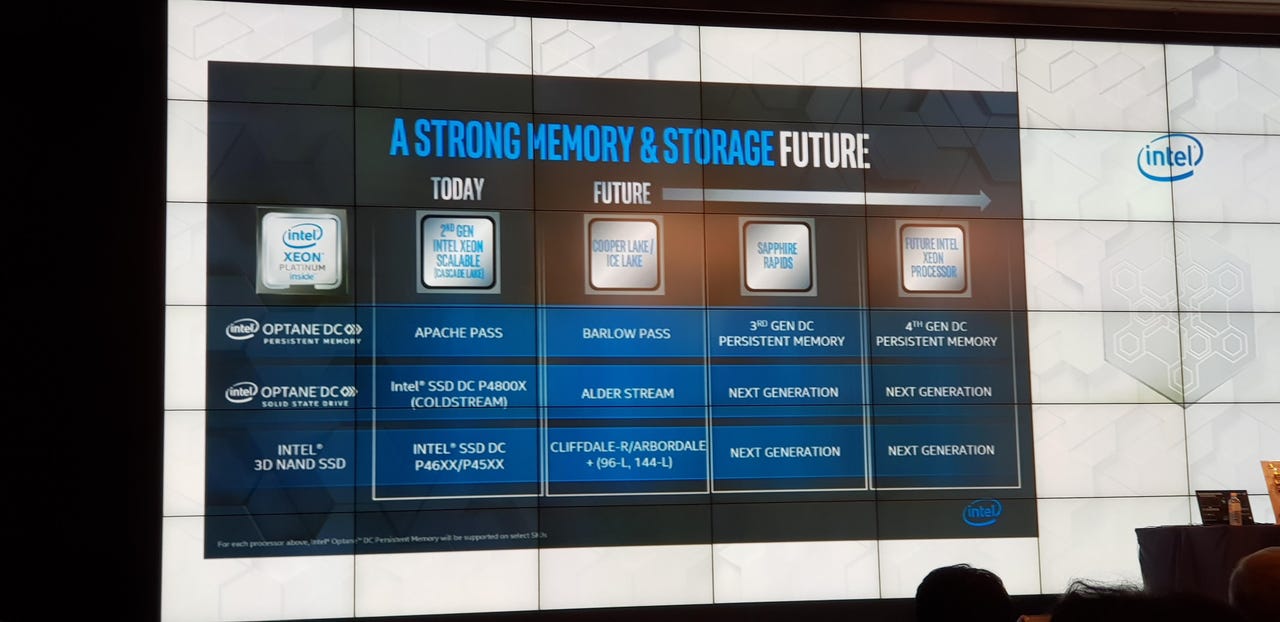Intel to launch 2nd gen Optane DC persistent memory 'Barlow Pass' next year

Intel has up to four generations in the pipeline for its touted Optane Memory line-up.
Intel will "fill the gap of the memory hierarchy" and bring processors and data closer together with the launch of its second generation Optane Data Centre (DC) Persistent Memory and Optane SSDs, as well as a 144-layer QLC 3D NAND for data centre SSDs, its executives said.
The world's largest semiconductor company also said it has four generations of Optane DC Persistent Memory and SSDs in the pipeline. The second generation Optane DC Persistent Memory has been dubbed the Barlow Pass, while the Optane SSD will be called the Alder Stream.
Intel will also start shipping a 96-layer 3D NAND in the fourth quarter and launch a 144-layer QLC, or 4-bits per cell, 3D NAND next year, said Rob Crooke, senior VP and general manager of Intel's Non-Volatile Memory Solutions team, at its Intel Memory & Storage Day press event in Seoul, South Korea.
"Memory and storage has historically been built in a hierarchical way," Crooke said.
"Anytime you can get a 10x faster capacity performance improvement we have the opportunity insert a new layer," he said, positioning its Optane DC Persistent Memory as the new layer that comes between processor and data.
Crooke claims the new hardware will provide more capacity than conventional DRAM and be faster than traditional 3D NAND SSDs.
"DRAM density is slowing and the gap between and data and memory capacity is increasing," said Kristie Mann, senior director of Intel's Optane DC Persistent Memory Products team. "Our Optane DC SSDs are, I would say, SSDs on steroids."
Mann said Intel is confident that the Optane line-up will still be a central layer in data centres ten years down the track.
Launched in 2017, Intel's Optane DC Persistent Memory Module sits on the processor's memory bus, is byte addressable -- unlike block-based storage -- and is much faster than any SSD.
South Korea is home to Samsung Electronics, which like Intel, is an integrated device maker that both designs and fabricates semiconductor.
Samsung, propelled by record operating profits thanks to unprecedented demand for memory chips, had briefly taken over Intel's position as the largest semiconductor company by revenue in 2017. It has since ceded its position at the top however, due to the recent downturn in the memory market.
Related Coverage
Intel server-grade CPUs impacted by new NetCAT attack
Academics develop new network-based attack that steals keystrokes from an active SSH session.
Intel tunes its IoT solutions with the help of blueberry farmers
Working with farmers and fruit processors in Oregon, the chipmaker refined its supply chain solutions for cold chain use cases.
IBM's Power-ful open source gift: China wins big, and these are the losers
It's a heck of an announcement by Big Blue, and this is a heck of a list.
Intel releases 10th generation 14nm mobile U and Y chips dubbed Comet Lake
The 14nm Skylake architecture rolls around one more time.
Enterprise vendors increasingly dominate the open source software scene
The open source revolution, chugging along for two decades now, is still going strong -- and is now a huge industry, led by large, non-open-source vendors.
Intel retracts Apollo Lake warning, discounts claims of reliability issues (TechRepublic)
Intel published documentation indicating a major CPU flaw similar to the 2016 Silvermont C2000 bug, though retracted it claiming the issues were fixed in firmware update for already-deployed CPUs.
